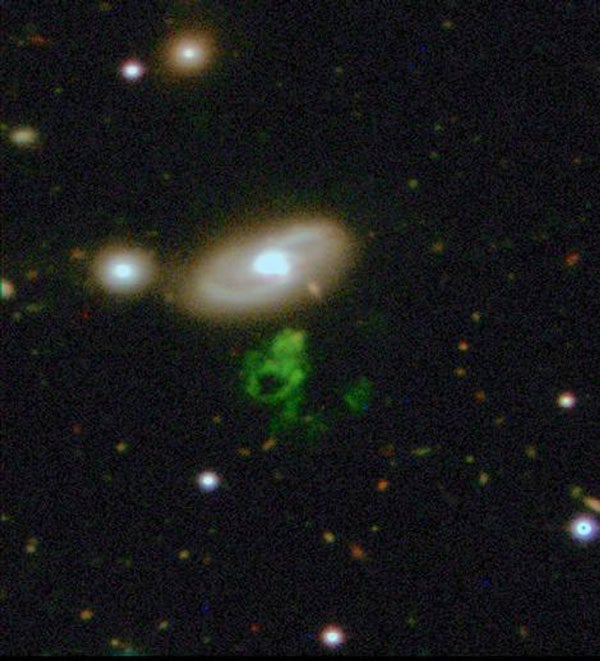How many arms does a spiral galaxy have? Can you spot a galaxy with a “peanut” bulge? Or how about a galactic merger? Ordinary web users who, by working together, have proven to be just as good at galaxy spotting as professional astronomers will provide answers to these and other strange questions.
Related blog: : Here comes Galaxy Zoo 2, by Daniel Pendick, associate editor.
The new initiative is a follow-up to the highly successful Galaxy Zoo project that enabled members of the public to take part in astronomy research online. But whereas the original site only asked members of the public to say whether a galaxy was spiral or elliptical, and which way it was rotating, Galaxy Zoo 2 asks them to delve deeper into 250,000 of the brightest and best galaxies to search for the strange and unusual.
The Galaxy Zoo 2 web site is www.galaxyzoo.org.
“The first Galaxy Zoo provided us with a Rough Guide to the sky and now we want our users to fill in all the details and create a real Hitchhiker’s Guide to the Galaxies,” said Dr. Chris Lintott of Oxford University, England, one of the founders of Galaxy Zoo.
Astronomers came up with the idea of getting online volunteers involved because the human brain is still better at doing pattern recognition tasks than a computer. What they had not expected was the huge enthusiasm for the project; in the last 18 months more than 150,000 armchair astronomers from all over the world submitted 80 million classifications of galaxies on one million objects.
Dr. Kevin Schawinski of Yale University, Connecticut, another of Galaxy Zoo’s founders said, “The response from the public was absolutely overwhelming and, with their help, we’ve been able to learn a lot about how galaxies evolve and how they relate to their environment. With the detail from Zoo 2, we’ll be able to discover even more about how galaxies work.”
“Galaxy Zoo has given everyone with a computer an opportunity to contribute to real scientific research. We want people to feel truly involved in the project and keep them up to date with what we’re doing and with the results they’re generating,” said Dr. Steven Bamford of the University of Nottingham, United Kingdom.
As with the original site, people are free to look at and describe as many galaxies as they like – even five minutes’ work will provide a valuable contribution. Galaxy Zoo 2 is intended to be even more fun as galaxies are pitted against each other in “Galaxy Wars” (which one is more spirally?), and users can compete against their friends to describe more objects as well as record their best finds.
Proof that unusual discoveries can be made is the catalog of merging galaxies provided by users – more than 3,000 of these rare cosmic pile-ups have been caught in the act by Galaxy Zoo volunteers. The team has used the Infrared Radiometer for Millimeter Astronomy (IRAM) radio telescope in Spain’s Sierra Nevada to follow up the most exciting mergers, and it is asking for more examples to study.
“In this International Year of Astronomy, it’s great to have so many people looking at these beautiful image of galaxies from the Sloan Digital Sky Survey,” said Professor Bob Nichol of the University of Portsmouth, United Kingdom, a member of the original Galaxy Zoo team. “No single professional astronomer has ever looked at all these images and sometimes astronomers miss the wonder of what they are. I think the public gets this better than us.”










